Category Archives for Garmin
Garmin Holiday Gift Guide
Let’s be real — coming up with the “best gift ever” can be a bit stressful. It is likely not going to be the most wonderful time of the year if your significant other’s tastefully dropped hints go unnoticed and you pick out a kitschy pair of socks for the fourth year in a row. (Disclaimer: Our legal department would like us to let you know we cannot guarantee your relationship status if you finally buy a good gift after three years of kitschy socks. It may be too far gone. What were you thinking?)
Anyway, we get it. Finding the perfect present for everyone on your holiday shopping list has been nearly impossible — until now. No matter where your loved one likes to play — be that land, sea or air — Garmin has just the thing. Keep scrolling for a roundup of gift ideas that Santa Claus won’t be able to top.
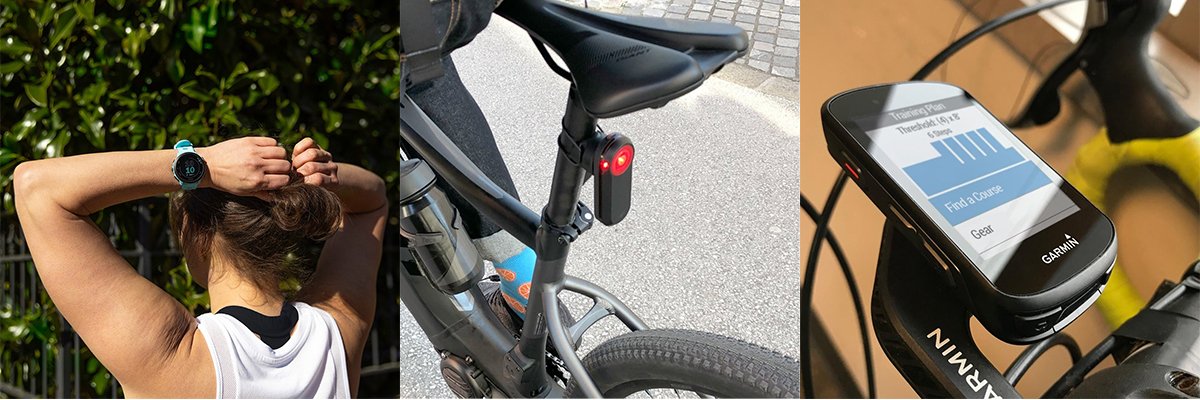
Fitness Gifts
Edge® 530
Featuring advanced mapping, cycling safety features and dynamic performance insights, the Edge 530 is a lightweight GPS cycling computer designed for use on all terrains. Whether you’re a podium finisher, gravel grinder, urban rider or somewhere in between, the Edge 530 is ready for any adventure.
Forerunner® 55
Focus on the fundamentals or take your training to the next level with the Forerunner 55. No matter your skill level, the Forerunner 55 is here to help you track your stats. Lightweight and comfortable, this watch is the perfect fit for running and for everyday life.
Forerunner® 945 LTE
Designed to help athletes stay connected on the go, the Forerunner 945 LTE brings phone‑free safety and tracking features1, spectator messaging and live event sharing to the wrist — all while still providing the detailed training data, performance monitoring tools and smartwatch features athletes have come to rely on.
Tacx® Boost
Take your ride inside with the Tacx Boost, an affordable and quiet basic trainer that makes it easy to train year‑round. Key training features like resistance control, realistic ride feel and more let you make the most of every ride. Ride at any time without disturbing others; the closed resistance unit reduces noise so you can work out without waking the whole household.
Varia RTL515
RTL515
No matter where or when, you ride, stand out and stay aware of cars approaching from behind with the Varia RTL515 rearview radar tail light. When paired with a compatible Garmin device, your phone or both, you will receive visible and audible alerts warning of approaching vehicles. During the day, the tail light can be seen from up to a mile away, making it easier for drivers to see you and providing greater peace of mind during any ride.

Wellness Gifts
Venu® 2/2S
When you live healthy, you live better. This GPS smartwatch is built for your active lifestyle with advanced health monitoring and fitness features to help you better understand what’s going on inside your body. Available in two sizes with a battery life of up to 11 days, built‑in music, Garmin Pay contactless payments2, smart notifications3 and more.
contactless payments2, smart notifications3 and more.
Venu® Sq
Get premium health, wellness and fitness features at an accessible price with the Venu Sq entry-level GPS smartwatch. It comes in a variety of colors with a battery life of up to 6 days. It includes Garmin Pay, smart notifications, and is available in a music and non‑music version.
Lily
This stylish smartwatch is the first of its kind from Garmin with an incredibly small, 34 mm watch case and a stylish patterned lens. Just tap or twist your wrist to reveal the bright touchscreen display to see your texts, calls, calendar reminders3 and more. Choose from classic and sport designs with a variety of color, metal and interchangeable band options — including leather and silicone — so you can find the perfect piece to fit your look.
vívofit® jr. 3
vívofit jr. 3 isn’t just a fitness tracker for kids. It’s an interactive experience activity that unlocks app adventures. The jr. 3 has a new watch‑like shape with downloadable watch faces, an “in case of emergency” widget, and a durable, swim‑friendly band available in a multitude of colors and themes — plus a battery life of up to 1 year (no recharging!)

Outdoor Gifts
fēnix® 6 Solar Series
Featuring a Power Glass solar charging lens and a customizable power manager mode, fēnix 6 Solar Editions harness the power of the sun4 to stay on and remain performance‑ready for weeks, so users will have more on‑wrist time to enjoy their activities, training features, onboard mapping, music streaming and much more. Expanding the robust activity profiles included in the fēnix series, the fēnix 6 and 6S Solar Editions come surf-, mountain bike- and indoor climb‑ready. The smaller‑sized fēnix 6S Pro Solar also features an exclusive Women of Adventure design option.
solar charging lens and a customizable power manager mode, fēnix 6 Solar Editions harness the power of the sun4 to stay on and remain performance‑ready for weeks, so users will have more on‑wrist time to enjoy their activities, training features, onboard mapping, music streaming and much more. Expanding the robust activity profiles included in the fēnix series, the fēnix 6 and 6S Solar Editions come surf-, mountain bike- and indoor climb‑ready. The smaller‑sized fēnix 6S Pro Solar also features an exclusive Women of Adventure design option.
Instinct® Solar
Do what you love, longer. Instinct Solar is a GPS smartwatch built to break convention, conquer the elements and endure longer. Experience unprecedented battery life with solar charging4, wrist‑based heart rate5 and built‑in sports apps right on the wrist for swimming, running, biking, hiking, rowing strength and more. With a purpose‑built design, it’s available in bold color options that bring to life a nontraditional smartwatch that turns heads at every glance.
Enduro
Featuring a Power Glass solar charging lens that extends battery life4 and packed with top performance features, the Enduro GPS watch is built for extreme endurance athletes like you. It’s lightweight but durablefor seriously epic race conditions and gets up to 80 hours of battery life in GPS mode, the longest battery life of any Garmin watch to date.
Descent Mk2i
Mk2i
The dive computer for both your worlds — monitor your gas and depth with the advanced, watch‑style dive computer that comes with multisport training and smart features. Pair it with a Descent T1 transmitter for integrated pressure monitoring on up to 5 tanks via SubWave
T1 transmitter for integrated pressure monitoring on up to 5 tanks via SubWave sonar data network.
sonar data network.
MARQ® Collection
The MARQ Collection is destined for those who aspire to the lifestyles we have redefined over decades of innovation. For them we present these magnificent modern tool watches — our tribute to their rightful rewards, built with purpose in both form and function. Each modern tool watch is uniquely crafted to be an outward expression of the owner’s personality, interests and ambitions.
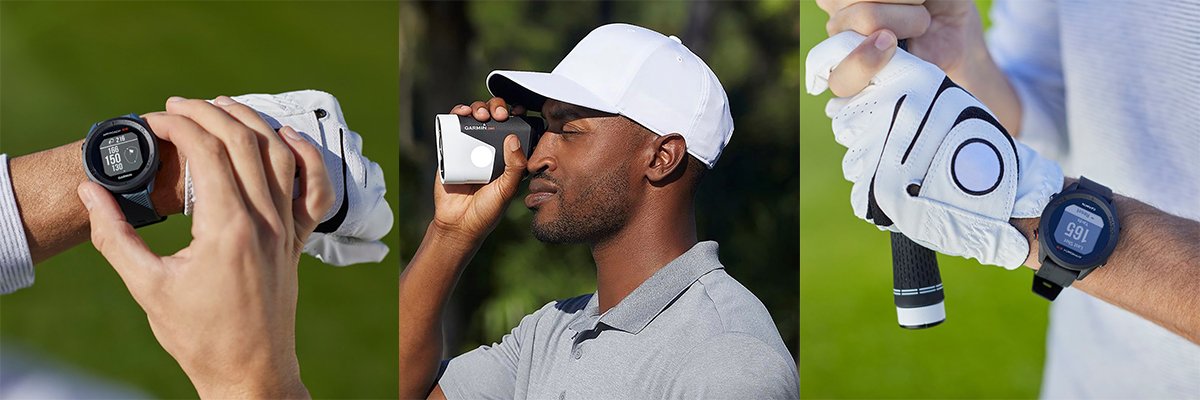
Golf Gifts
Approach® S12
We’ve got your game with the sleek Approach S12, a GPS golf watch with a sunlight-readable display, critical information from more than 42,000 course maps worldwide and a style that goes beyond the clubhouse. Boasting an array of features to help enhance a golfer’s game, the Approach S12 offers a quick reference to the front, middle and back of the green as well as distances to hazards and doglegs so you have all the data you need for the perfect shot.
Approach® Z82
Set your sights on something greater with the Approach Z82 laser range finder with GPS. Designed to help improve a golfer’s situational awareness, the Approach Z82 measures precise shot distances ranging from within 10” of the pin up to 450 yards. The flag finder locks in with vibrational feedback, and image stabilization makes it easier to find and range the flag. Experience full‑color, 2D CourseView mapping through the lens and Green View overlay on more than 42,000 courses worldwide.
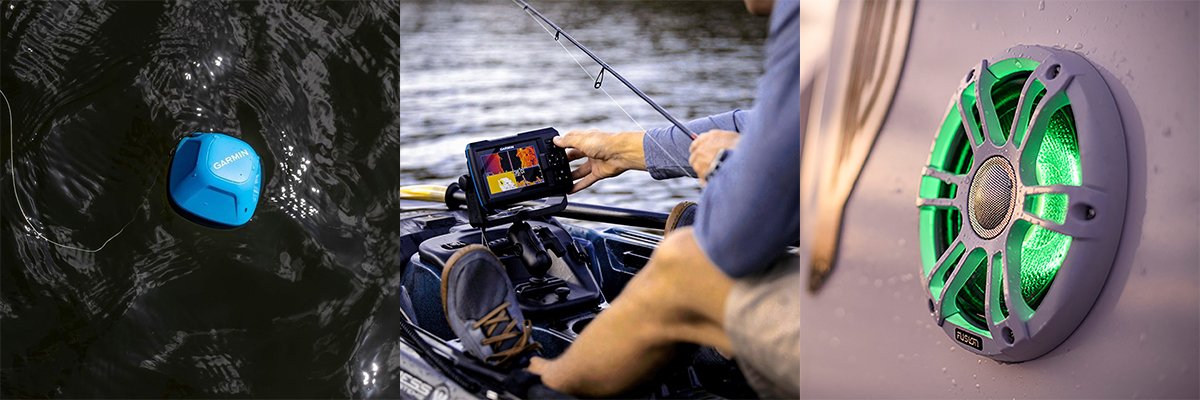
Marine Gifts
STRIKER Cast
Cast
Why guess where to find fish? See exactly where they’re hiding with STRIKER Cast castable sonar. Just download the STRIKER Cast app, pair your compatible mobile device with the sonar and go fishing in minutes. Cast from shore, dock or watercraft and reel back in to locate and display fish on your compatible smartphone or tablet.
STRIKER Vivid Series
Vivid Series
See fish and structure in colorful detail with the STRIKER Vivid Series fishfinders. These easy‑to‑use fishfinders feature high‑contrast color palettes, making it easier to see what’s beneath the surface. Featuring industry‑leading Garmin CHIRP traditional sonar and ClearVü and SideVü scanning sonar technology, STRIKER Vivid ensures that anglers see crystal‑clear fish arches and remarkable target separation.
Fusion® Signature Series 3
The Fusion Signature Series 3 marine speakers and subwoofers push the boundaries of what is possible on the water. The Signature Series 3 incorporates premium materials and marine‑specific design elements to deliver premium aesthetics to any boat, in addition to the ability to reproduce high‑quality audio while out on the water.
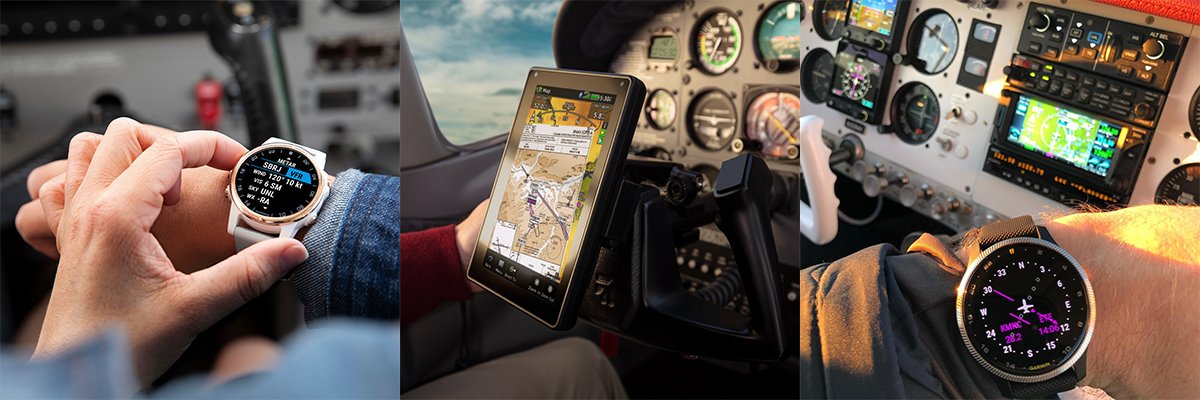
Aviation Gifts
aera® 760
Innovative, all‑in‑one portable GPS for pilots with a 7’’ display. Fly confidently with our rugged, reliable, purpose‑built GPS that includes our latest in‑flight features, including IFR approaches, arrivals and departures, plus our familiar touchscreen interface.
D2 Delta
Delta
You’re a pilot. You want a premium GPS aviator watch with advanced tools for the cockpit and style that sets you apart even after you land. The Garmin D2 family of premium GPS aviator watches was the first to put true global flight navigation capability on the wrists of forward‑looking pilots and flying enthusiasts. Now, with our D2 Delta series, we’ve brought this technology to whole new levels of capability and connectivity.
D2 Air
Air
Take flight with a modern smartwatch that is built for the cockpit. Whether a dedicated aviator or an aspiring pilot, D2 Air offers tools for all the phases of flight, including weather, Direct‑to navigation, airport information, flight logging, Pulse Ox6 and much more. Featuring a slim and sophisticated AMOLED touchscreen display, the D2 Air can be worn 24/7 for a seamless transition from air to land. D2 Air also incorporates connected features for life on the go, such as smart notifications3, contactless payments via Garmin Pay2, health monitoring, animated workouts and more.
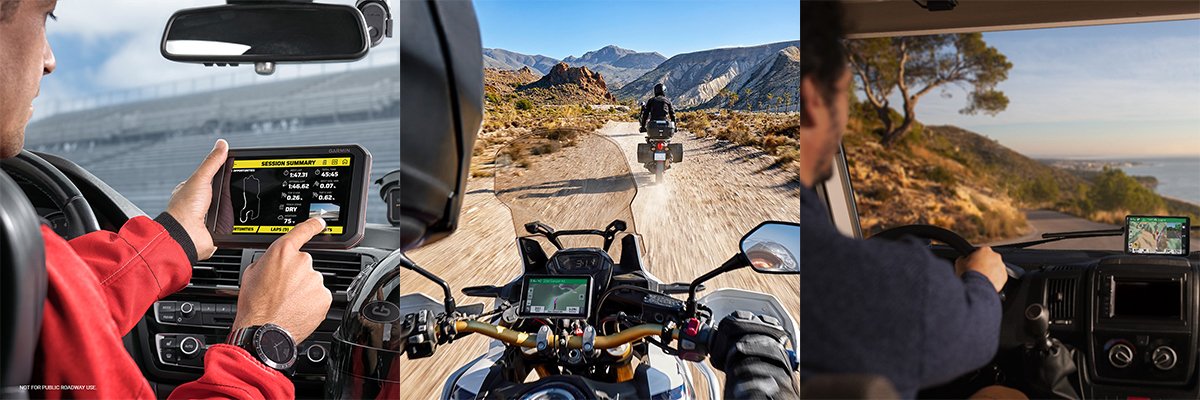
Automotive Gifts
Garmin Dash Cam Mini 2
Mini 2
Tiny but mighty. The car key‑sized Garmin Dash Cam Mini 2 offers discreet eyewitness incident detection7, voice control technology and crisp 1080p automatic recording capabilities. With a wide 140‑degree lens and Garmin Clarity HDR optics, the tiny camera is able to provide huge protection by capturing amazing details day and night.
HDR optics, the tiny camera is able to provide huge protection by capturing amazing details day and night.
Garmin Catalyst
Garmin Catalyst is a groundbreaking real‑time coaching tool and driving performance optimizer8 set apart from any other GPS lap timer or data system the motorsports industry has experienced. True Track Positioning technology uses built‑in accelerometers, 10 Hz multi‑GNSS positioning and image processing to automatically generate your car’s racing line on the track. Plus, our revolutionary True Optimal Lap
technology uses built‑in accelerometers, 10 Hz multi‑GNSS positioning and image processing to automatically generate your car’s racing line on the track. Plus, our revolutionary True Optimal Lap technology shows your fastest achievable time based on lines you actually drove.
technology shows your fastest achievable time based on lines you actually drove.
dēzl Truck Navigators
Truck Navigators
Get a clear view of the road ahead with the dēzl OTR500, 700, 800 and 1000 truck navigators. With PrePass® weigh station bypass options for active PrePass account users and easy‑to‑read displays across the board, there’s a dezl navigator option to satisfy most trucking needs. The navigators are equipped with custom truck routing9 for the size and weight of your rig, adding popular route suggestions, truck‑friendly parking, and load-to-dock guidance.
OTR500, 700, 800 and 1000 truck navigators. With PrePass® weigh station bypass options for active PrePass account users and easy‑to‑read displays across the board, there’s a dezl navigator option to satisfy most trucking needs. The navigators are equipped with custom truck routing9 for the size and weight of your rig, adding popular route suggestions, truck‑friendly parking, and load-to-dock guidance.
RV 1090
Not sure if your RV can cross a specific bridge or road during a cross‑country trip? No worries, the RV 1090 GPS navigator can create custom routes9 that take into account the size and weight of your RV and provide road warnings for steep grades, sharp curves and more. To simplify your trip even more, the RV 1090 includes Tripadvisor® traveler ratings, a preloaded directory of RV parks and services plus content from Ultimate Public Campgrounds, KOA and more.
zūmo® XT
The zūmo XT all‑terrain motorcycle navigator is built for adventure. Thanks to an ultrabright 5.5” display and a rugged frame that is both rain‑resistant and glove‑friendly, the zūmo XT can withstand all kinds of weather, extreme temperatures and rigorous vibrations. Enthusiasts looking to explore the winding roads can access adventurous routes with turn‑by‑turn directions for on‑road navigation and topographic or downloadable BirdsEye Satellite Imagery for off‑road guidance.
1Assistance Plus is not available in all markets where Category M1 LTE network connectivity is available; see Assistance Plus coverage area at Garmin.com/LTECoverage. For safety and tracking feature requirements and limitations, see Garmin.com/ltesafety.
2View current supported country, payment network and issuing bank information at Garmin.com/GarminPay/banks
3When paired with a compatible smartphone; see Garmin.com/ble
4Assumes all-day wear with 3 hours per day outside in 50,000 lux conditions
5See Garmin.com/ataccuracy
6This is not a medical device and is not intended for use in the diagnosis or monitoring of any medical condition; see Garmin.com/ataccuracy. Pulse Ox not available in all countries.
7Some jurisdictions regulate or prohibit use of this camera device. It is your responsibility to know and comply with applicable laws and rights to privacy in jurisdictions where you plan to use this device.
8WARNING: This device is intended only for recreational use in a circuit environment. Never use this device on public roadways. Failure to follow this warning may result in an accident causing property damage, serious personal injury, or death. You are responsible for using this device in a safe and prudent manner.
9Not available in all areas. Entering your RV or trailer profile characteristics does not guarantee your RV’s characteristics will be accounted for in all route suggestions. Always defer to all posted road signs and road conditions.
The PrePass logo is a trademark of the PrePass Safety Alliance.
© 2021 TripAdvisor LLC All rights reserved.
Copyright © 2021 Ultimate Campgrounds – All rights reserved.
Copyright © 2021 Ultimate Campgrounds – All rights reserved.
The post Garmin Holiday Gift Guide appeared first on Garmin Blog.
https://www.garmin.com/en-US/blog/general/garmin-holiday-gift-guide/
Five Ways Garmin Autoland Offers Peace of Mind to Aircraft Pilots and Passengers
Whether you’re in the sky for business or pleasure, you take on a massive responsibility when you enter the cockpit to fly an airplane. Everyone on board is in your care, and it’s your job to get them from point A to point B safely. But what if something happens to you?
Enter Garmin Autoland, the revolutionary avionics system that autonomously lands the plane if a pilot is unable to fly1. Winner of the prestigious 2020 Robert J. Collier Trophy awarded by the National Aeronautic Association, Autoland has been recognized as “the greatest achievement in aeronautics or astronautics in America, with respect to improving performance, efficiency, safety in air or space vehicles.” But how does it work? Here are five ways Garmin Autoland provides peace of mind to those on board.
1. Allows for easily engaged in-flight assistance.
Passengers can activate Garmin Autoland with the simple push of an activation button. But if they aren’t sure where it is — or there are no passengers on the flight — Autoland can engage automatically when it determines the pilot is unable to fly the plane. (Note that once Autoland is engaged, the pilot can later deactivate it at their discretion.)
2. Identifies optimal destination.
Once engaged, Autoland will scan its options and choose the best airport for landing. It takes into consideration distance, runway length, fuel range and other factors to make this selection.
3. Avoids known hazards.
After selecting a destination for landing, Autoland will head toward that runway while navigating around obstacles such as hazardous terrain or weather as it flies the plane.
4. Announces intentions.
Once Garmin Autoland has been activated and a destination has been selected, the system will automatically communicate its intentions to both the flight’s passengers and air traffic control.
5. Lands the aircraft.
Once the airplane reaches its identified destination, Autoland will land the aircraft. It then stops the plane on the runway so that emergency services can immediately reach the pilot and any passengers on board2.
It’s really that simple. Interested in flying on an airplane equipped with Garmin Autoland? It’s now available on select G3000® flight deck-equipped aircraft, including 2020 or later models of the Piper M600 SLS, the Cirrus Vision Jet and the Daher TBM 940 — and it’ll be making its way to more soon. Check our Autoland webpage for the most up-to-date compatibility information.
1See Autoland system requirements and limitations
2Aircraft may require maintenance after Autoland use
The post Five Ways Garmin Autoland Offers Peace of Mind to Aircraft Pilots and Passengers appeared first on Garmin Blog.
https://www.garmin.com/en-US/blog/aviation/five-ways-garmin-autoland-offers-peace-of-mind-to-aircraft-pilots-and-passengers/
Five Reasons Your Aircraft Needs Garmin Smart Glide
In the event of the loss of engine power in a single-engine aircraft, a pilot faces the urgent, workload-intensive job of maneuvering the aircraft from its current position to a suitable airport. Enter Garmin Smart Glide . Available on GTN
. Available on GTN Xi series navigators with compatible flight displays, Smart Glide provides added peace of mind, guidance and assistance during loss of power events in single-engine aircraft. Here are five ways Smart Glide can be helpful during these situations:
Xi series navigators with compatible flight displays, Smart Glide provides added peace of mind, guidance and assistance during loss of power events in single-engine aircraft. Here are five ways Smart Glide can be helpful during these situations:
1. It continuously calculates and assesses options in the background.
Engine-out emergencies can happen to anyone — anytime, anywhere — and those initial moments can be stressful. We designed Smart Glide to continually monitor flight conditions and calculate glide options in the background, so if a loss of engine power does occur, the system is already prepared. You can then activate Smart Glide in one of several easy ways depending on your avionics and panel configuration — with a dedicated panel-mounted Smart Glide button, by holding the Direct-to button on the GTN Xi navigator for two seconds or via a compatible flight display. This quick and easy activation allows pilots to continue assessing the situation, working through checklists and troubleshooting the issue.
2. It recommends a route with alternatives.
Once activated, Smart Glide automatically considers glide range, terrain, obstacles and more to recommend a suitable airport for landing, along with a list of alternative options in the vicinity (if available). If no airport is within the estimated glide range, Smart Glide will let you know.
Once an airport is selected, Smart Glide creates a Direct-to route to the airport.
3. It can assist flying a selected route.
If your aircraft is equipped with a Garmin GFC 500 or GFC
500 or GFC 600 autopilot, Smart Glide can lend a hand flying the plane. When activated, it automatically switches the CDI to GPS mode, engages the autopilot in IAS mode at best glide speed and activates flight director command bars on the compatible flight display. This allows pilots to dedicate more attention toward working through checklists and troubleshooting the emergency.
600 autopilot, Smart Glide can lend a hand flying the plane. When activated, it automatically switches the CDI to GPS mode, engages the autopilot in IAS mode at best glide speed and activates flight director command bars on the compatible flight display. This allows pilots to dedicate more attention toward working through checklists and troubleshooting the emergency.
For aircraft equipped with third-party autopilots, pilots can activate the appropriate autopilot modes to receive lateral GPS guidance with Smart Glide.
4. It automatically assists with certain emergency tasks.
To further assist pilots en route during a loss of engine power, Smart Glide automatically loads the selected airport’s CTAF frequency in the primary Comm standby position and offers a shortcut for loading transponder code 77001. That way, when the time comes to switch frequency or activate the emergency squawk code, Smart Glide has already prepared the avionics for the pilot
5. It automatically displays valuable information.
While en route to an emergency destination, Smart Glide displays a glide range ring and provides airport information, including bearing and distance, longest runway orientation, estimated arrival altitude (AGL) and winds (if available). The system also provides aural distance and bearing alerts for the airport and advises when the pilot should begin maneuvering for landing. Once the aircraft reaches that point, the pilot resumes control and can land the aircraft.
Are you ready to add Smart Glide to your aircraft? If your aircraft is already equipped with a compatible Garmin avionics, you may be able to add Smart Glide with a simple software upgrade — just contact your local Garmin authorized dealer. For more information about our Smart Glide technology and how it can be helpful during a loss of engine power, click here.
1Requires a compatible transponder (sold separately)
The post Five Reasons Your Aircraft Needs Garmin Smart Glide appeared first on Garmin Blog.
https://www.garmin.com/en-US/blog/aviation/five-reasons-your-aircraft-needs-garmin-smart-glide/
Four Reasons to Use AeroData in Your Flight Operations
Garmin announced the acquisition of AeroData, a leading provider of performance data solutions and services for commercial aircraft, in May 2021. With AeroData, operators benefit from countless features that make daily operations more seamless and help flights run safely and on time. And while the list is hard to narrow down, below are just a few of our favorite things about AeroData’s solutions.
1. Precision
With more than 30 years of experience, AeroData offers precise and accurate performance data to more than 70% of all airline flights in North America each day. Runway-specific departure engine failure procedures (EFPs) demonstrate obstacle clearance limits in an engine-out scenario for your specific aircraft airframe and engine model.
In addition to aircraft-specific EFPs, AeroData provides takeoff, en route and landing performance data; weight and balance; dvanced automated passenger and cargo load planning services, as well as many other integrated software solutions.
With AeroData, operators and crews have ultimate flexibility when conditions change quickly — contaminated runways, a sudden runway change, shifting winds, unexpected precipitation, and many more factors can drastically affect takeoff and landing performance data. Using AeroData, crews can quickly assess an intersection takeoff, alternate runway or account for changing containmated runway conditions — generally without the need to rerun calculations, easing cockpit workload and reducing dispatch displays.
2. Customization
Customer-defined parameters within AeroData provide ultimate flexibility and allow customers to tailor solutions to their engine/airframe combinations and operations. Because AeroData works with major airframe manufacturers, including Airbus, Boeing, Bombardier and Embraer, and most major flight planning systems, we can provide detailed performance data to any fleet and mix.
3. Ease of Use
Easily access performance data via an aircraft communication addressing and and reporting system (ACARS) connection. No ACARS? No problem. AeroData has multiple delivery methods, including a connected tablet option as well as a web-based platform to ensure important performance data is never far away. In addition, the AeroData performance solution offers primary delivery of performance data, as well as a backup service to help ensure flights are being dispatched consistently and on time. To provide an enhanced experience to the more than 135 airlines AeroData serves globally, the NOTAM and flight path analysis teams are available around the clock to help with any concerns.
4. Price
AeroData utilizes a shared cost model to ensure airlines both large and small can access the benefits of a real-time, connected performance data solution. The per-departure fee pricing allows operators greater budget accuracy and doesn’t penalize the airline during contractions. In addition, our vertical integration lowers setup fees and helps get your operation in the air even quicker.
Interested in learning more about AeroData? Contact a member of our team today.
The post Four Reasons to Use AeroData in Your Flight Operations appeared first on Garmin Blog.
https://www.garmin.com/en-US/blog/aviation/four-reasons-to-use-aerodata-in-your-flight-operations/
Garmin Avionics Team Wins 18th Consecutive Aviation International News Award
For the 18th year in a row, Aviation International News (AIN) has dubbed Garmin the Overall Average leader in the Flight Deck Avionics segment in the AIN 2021 Product Support Survey. Garmin also received top rankings in every category of the survey, which are: Cost Per Hour Programs, Parts Availability, Cost of Parts, AOG Response, Warranty Fulfillment, Technical Manuals, Technical Reps and Overall Avionics Reliability.
AIN’s annual Product Support Survey is based exclusively on feedback from users of business jets, pressurized turboprop airplanes and turbine-powered helicopters. The survey is password-protected to ensure that only qualified readers are able to give input — meaning the results are based on unbiased, professional opinions of 1,450 avionics systems evaluations.
In the past year, the Garmin avionics product support team has worked hard for the top ranking. Lee Moore, the Garmin director of avionics product support, reports that new projects include (but are certainly not limited to):
- The expansion of self-service opportunities with more video and frequently asked questions content if a customer prefers these options over direct phone or email support (both of which are still always available to those who prefer person-to-person interaction).
- The addition of staff to our customer support and distributor support teams, which allows for increased coverage during peak demand hours, more internal training options and expanded weekend operating hours.
- The automation of our field quality reporting process to expedite the flow of feedback directly from aircraft owner/operators, service centers and installers to the correct Garmin engineering team.
- The addition of virtual training offerings and a bolstered eLearning library so installers and pilots can continue to receive access to the best education even when pandemic restrictions hinder in-person training options.
To read AIN’s full survey report, click here. To contact our award-winning product support team or to access our library of eLearning materials, click here.
The post Garmin Avionics Team Wins 18th Consecutive Aviation International News Award appeared first on Garmin Blog.
https://www.garmin.com/en-US/blog/aviation/garmin-avionics-team-wins-18th-consecutive-aviation-international-news-award/
A Behind-the-scenes Look at Garmin Autopilot Certifications
Max Unruh’s official title at Garmin is aviation product manager of autopilot systems. In layman’s terms? He’s a part of the team that decides which aircraft to certify for Garmin autopilot solutions. That means he helps to determine which aircraft is up next for certification, as well as which model will be the ideal test aircraft. By his count, he’s completed about 54 aircraft contracts in his two years at Garmin, 40 of which were for the GFC 500 or GFC
500 or GFC 600 digital autopilot.
600 digital autopilot.
It’s a long process, says Unruh, and aircraft owners wait with baited breath as they refresh the list of currently supported aircraft, as well as those certification programs that are in progress and those that will begin in the next 12 months. But if you don’t see your aircraft included, don’t despair — there’s a way to toss your hat in the ring for your own plane, and Unruh is sharing some insight into the process for an extra edge.
What does Garmin look at when selecting a test aircraft?
Unruh looks for a unique combination of aircraft characteristics that tick all the boxes necessary for certification. “I have a high bar for incoming aircraft, and the selection process is not easy,” he says, noting that the owners who are selected typically report feeling like they’ve won the lottery. When he considers an individual aircraft, Unruh looks at:
- Aerodynamic characteristics of the airplane
- Horsepower
- Rating of the engine and common engine upgrades that are available out in the field
- The range of gross weight possible, from largest to smallest
- Whether the plane has any Garmin avionics installed already, particularly a display and GPS source at the minimum
How do I submit my aircraft for autopilot certification?
The answer to this one is simple: If you are interested in GFC 500 or GFC 600 for your aircraft, just fill out this form. And even if your plane isn’t chosen immediately, says Unruh, that doesn’t mean it’s not being considered.
“I go in and review that information,” says Max. “It’s personally reviewed by a Garmin employee. And when I am looking for an aircraft, I use that list heavily. That’s probably my best fishing hole.”
The form requests that you provide your name, email address, which autopilot model you’re interested in and your aircraft make, model and registration number. There’s also a section to include additional details, and this is where Unruh has some pro tips.
“The pertinent details are whether or not the aircraft has any mods that make it different from the type design or any type of damage history and modifications,” he says. “I really want to know what kind of Garmin avionics they have installed. And one really nice thing is when an owner puts down their phone number.”
Another pro tip? If you’re connected with owners of similar aircraft, have them submit theirs for consideration as well.
“I like when owner groups post their aircraft on our website en masse,” says Unruh. “It generally helps to have a passionate and engaged aircraft owners group!”
What does the autopilot certification process look like once an aircraft is selected?
Once an aircraft is selected for autopilot testing and a contract is executed, the aircraft is flown to a Garmin facility and thoroughly inspected. The Garmin mechanical design team then starts exhaustive research by analyzing the aircraft as well as various manuals and documents to select servo mounting locations. Experimental parts are trial-fitted, and the autopilot is installed. Approximately halfway through the program, the aircraft transitions into flight testing. The Garmin flight test team checks every configuration, including forward and aft center of gravity, lightweight and heavyweight, and all corners of the speed and altitude envelope. The last aircraft milestone is when the autopilot goes through final certification testing to confirm the autopilot performance is as expected. Once the Supplemental Type Certificate (STC) is issued, the installation kits and all associated parts are built and made ready for shipment.
What’s next for the GFC 500?
Next on deck for consideration for the GFC 500, says Unruh, are lighter twin-engine piston aircraft. He’s got his eye specifically on the Twin Comanche. If you’re a Twin Comanche owner, you should be outfitted with at least a GI 275 electronic flight instrument to be ready to equip with the GFC 500 digital autopilot.
Crossing your fingers that Garmin certifies your aircraft next? Help us to help you by filling out the autopilot interest form here.
The post A Behind-the-scenes Look at Garmin Autopilot Certifications appeared first on Garmin Blog.
https://www.garmin.com/en-US/blog/aviation/a-behind-the-scenes-look-at-garmin-autopilot-certifications/
Lifesaving Technology
In the event the pilot of an airplane is unable to fly, Garmin Autoland can help protect the passengers on board by taking control of the airplane and landing it at a suitable airport. It’s revolutionary automation. And it’s the recipient of the 2020 Robert J. Collier Trophy — the annual award that represents the pinnacle of achievement in aeronautics and astronautics. In this special edition, we talk to Garmin engineers Bailey Scheel and Ben Patel and Executive Vice President, Managing Director of Aviation Phil Straub about the development of this technology — and what it means for the future of aviation.
The post Lifesaving Technology appeared first on Garmin Blog.
https://www.garmin.com/en-US/blog/aviation/lifesaving-technology/
The Flight to Perfection
Matthias Dolderer: flying instructor. Aerobatics legend. Air Race World Champion.
Cuban eight. Flick roll. Outside loop. When Matthias talks about aerobatics you can clearly hear his fascination for the sport. It’s his profession and his passion. For him, it has all the things he loves the most about flying as a pilot: speed, precision and skill.
“It’s the passion that gives you wings,” Matthias explains. “Plus, all the hard work I put in day after day, that is what helped me to launch my career. It all began at the local airfield when I was 5 years old. At the age of 10 I built my first model airplanes and four years later I took off for my first solo flight in a glider.” He remembers the emotions to this day and a hobby turned into a vocation. “I took part in an ultralight competition when I was 17 and won straight away. In addition to winning pride and passion, I felt that this is my future, my life.” He was a member of the national team at an early age, took part in European and World Championships and became Germany’s youngest flight instructor.
The combination of his passion for flying, obsession for perfection and being competitive from a young age made him fit perfectly into the world of air racing. A dream came true in 2009 when he took part in the Red Bull Air Race World Championship – the Formula 1 of the skies. “Only the best pilots qualify. I was ‘Best Rookie of the Year’. But even when you get there, you have to work hard every day, stay focused, learn from your setbacks and keep on improving.” The path to the winner’s rostrum was indeed long and hard, and it took a lot of resilience, determination and focus to get there. It all paid off in 2016, when he became the first and only German pilot ever to win this ultimate aviation sporting and speed spectacle. “It was amazing being one of the elite Air Race pilots, those madcap aviation enthusiasts, traveling the world, meeting new people and experiencing new cultures. Of course, the race itself is extreme. You have to fly your plane at speeds of up to 230 MPH just a few feet above the ground at the same time as navigating an obstacle course. It’s like trying to park a car in a garage at 250 MPH,” he laughs. “It isn’t just the adrenaline rush from flying at that speed that makes it so fascinating, but also the precision piloting of the plane. And you have to be in top mental and physical form.”

The Right Tool Watch
Technology obviously plays a crucial role in aviation. “When you’re in the air, you can still hear, see and feel. But sometimes the senses get confused. Especially when you’re upside down. That’s when I use the instruments for orientation. The plane’s look is also important to me. Both as a whole, and the details in the cockpit. That’s why my MARQ® Aviator is perfect for me. And it’s perfect in itself. Precision, perfection, design and style. It looks like an aircraft instrument. It’s kind of crazy how many things you can do with a tool watch these days: it gives me access to global aviator’s maps, it has a pre-flight check, routine check during the flight and even a direct-to navigation key and an off-course indicator. Pilots have an affinity with watches and to me the MARQ is the best fusion of aviation and everyday tools. In this way I can stay safe and efficient, and I have features like mails, alerts, Garmin Pay , etc. on my wrist.”
, etc. on my wrist.”
Like everyone else, Matthias has been longing to travel again. “With a bag over my shoulder and my MARQ Aviator on my wrist. An alarm at 4 a.m. in the morning. Still pitch black. Clear, cold and tangy air. Silence. Isolation. Start. Take-off. At one with nature and the skies. Then, the miracle of dawn. A pink hue over the horizon. The fascination of flying at its finest,” he concluded with a content smile.
To explore the full MARQ collection, click here.
The post The Flight to Perfection appeared first on Garmin Blog.
https://www.garmin.com/en-US/blog/aviation/the-flight-to-perfection/
Garmin Wins FLYING Magazine’s 2021 Flying Innovation Award
Garmin Autoland brought home FLYING Magazine’s 2021 Flying Innovation Award for an “incredible leap forward in GA safety.”
Garmin Autoland won the 2020 Robert J. Collier Trophy in June, and now it’s added FLYING Magazine’s 2021 Flying Innovation Award to its résumé.
Certified in May 2020 on select general aviation aircraft, Garmin Autoland is the world’s first autonomous system designed to activate in an emergency to fly and land an aircraft with no human intervention. It can take over automatically after determining a pilot is unable to fly, or it can be engaged when the pilot or passengers press an activation button. It will then select an optimal destination to land, avoid known hazards, announce its intentions to air traffic control and passengers, and then proceed to land the airplane1.
“We honor the foresight and decade of effort invested by the team at Garmin Aviation, as well as those significant contributions of their OEM partners — Piper Aircraft, Daher and Cirrus Aircraft — to bring an automated landing within reach of general aviation pilots and passengers,” FLYING Magazine said in its announcement. “It’s a privilege to give the 2021 Flying Innovation Award for this incredible leap forward in GA safety to Garmin Aviation.”
Autoland is part of the Autonomí family, a suite of autonomous safety-enhancing technologies that are designed to make flying easier and safer for both pilot and passengers. Other Autonomí technologies include Electronic Stability and Protection (ESP
family, a suite of autonomous safety-enhancing technologies that are designed to make flying easier and safer for both pilot and passengers. Other Autonomí technologies include Electronic Stability and Protection (ESP ), emergency descent mode, Smart Rudder Bias and Smart Glide
), emergency descent mode, Smart Rudder Bias and Smart Glide .
.
“It is a tremendous honor to be recognized with the prestigious Flying Innovation Award for Garmin Autoland,” said Carl Wolf, Garmin vice president of aviation sales and marketing. “We are so proud of the forward-thinking mindset and dedication to safety of the Garmin team, our aircraft manufacturing collaborators and so many others that played a part in the more than a decade’s long mission of making this life-saving technology a reality.”
To learn more about the award, see FLYING Magazine’s article here.
¹See Garmin.com/ALuse for Autoland system requirements and limitations
The post Garmin Wins FLYING Magazine’s 2021 Flying Innovation Award appeared first on Garmin Blog.
https://www.garmin.com/en-US/blog/aviation/garmin-wins-flying-magazines-2021-flying-innovation-award/
Five Tips for Planning Your Flight with FltPlan.com
FltPlan.com is the largest flight planning company in North America and offers free, web-based flight planning and filing, plus a full range of premium services. In fact, it’s got so many features that it’s easy to overlook some of your options. Below, we’ve highlighted five of our favorite FltPlan® components, complete with some tips to help you take full advantage.
Expected Departure Clearance Time (EDCT)
Obtaining your EDCT up to 90 minutes before departure can help alleviate headaches for flight crews and passengers alike. FltPlan can help.
EDCTs can be obtained up to 90 minutes before your scheduled departure time. EDCT notices and Planned ATC Routes are a package. If you select that you’d like to receive your Planned ATC Route, we will also send you any EDCT that may be in effect along with your wheels-up time, i.e., your EDCT. If your flight is not flying in an area of EDCTs, then you will not receive any EDCT emails.
To opt in, EDCTs can be found on the Main Menu page under Flight Tracking > ATC Route/EDCT.
We also offer a link on your Active Flight Plan List that will direct you to the FAA’s EDCT website. The FAA website will let you know whether or not your flight will be affected by delays.
Aircraft Performance Customization
FltPlan flight planning service’s customizable Aircraft Performance Page now allows you to switch your fuel units between lbs, gallons and kg with just a click.
Go to Main Menu > Settings > A/C Performance, and select your aircraft. Under the Method 2 heading, look for the “Fuel Units” drop-down menu, and select your desired unit of measurement. The conversion calculations are completed for you automatically.
You can also complete the blanks in the Advanced Fuel Burn section. This is ideal for taking information from your flight manual, POH or QRH, where some of the altitudes are not listed. By clicking the “Fill in Blanks Below” button, any empty fields — such as climb speed, cruise speed, fuel burn, etc. — are filled in. When you save your changes, a warning message will let you know if you have any gaps.
Find Nearby Fuel Stops
Looking for places to stop for fuel? Our Find Fuel Stop feature (under Flight Planning > Find Fuel Stop) can do just that. Select your aircraft, departure and arrival, and the date of flight, and you’ll be able to customize the distance, runway length and fuel type you’re looking for on the search. Once completed, all nearby fuel stops will display along with the runway length, FBO and fuel pricing.
Adding the Operator Name to Your ICAO Format Flight Plan
The FAA requires that Part 135 operators indicate their operator name in Item 18. With FltPlan, it’s a simple one-time process to set up your account to include this information in all your ICAO format flight plans.
To add OPR information to your ICAO data, go to Main Menu > Settings > A/C ICAO Data, and select the A/C. Under Emergency Contact & Aircraft Operator / Owner Info, complete the Operator Name field.
While you’re there, please make sure your emergency contact name and phone number are current. This is the number that FltPlan will call if there is an incident or accident, so please don’t enter your own contact information.
Plan Fuel Loads for the Day at a Glance
Do you fly multiple legs in a single duty and want a quick way to look at needed fuel loads? Minimum fuel required can be quickly viewed from our Flight Listing page. The listing, which also includes fuel burn, displays requirements for both IFR and VFR flights. With Flight Listing, all your routing and flight information can be seen on one page, which can be printed out to bring with you.
The Flight Listing page can be accessed from Main Menu > Flight Planning > Flight Listing.
Going to Oshkosh? Come visit us!
We’re excited to get back to AirVenture Oshkosh and be reunited with our aviation family! Visit Garmin and FltPlan at our exhibit on Celebration Way to demo our latest, greatest products and services. Flying a Garmin equipped airplane? We will be offering up to $100 off select database packages for all your flying needs at Oshkosh this year, and we will have pros on-site at our Database Desk to help you find the best solution for you. The discount applies only to purchases at the show and includes select database regions. See here for more information.
The post Five Tips for Planning Your Flight with FltPlan.com appeared first on Garmin Blog.
https://www.garmin.com/en-US/blog/aviation/five-tips-for-planning-your-flight-with-fltplan-com/
